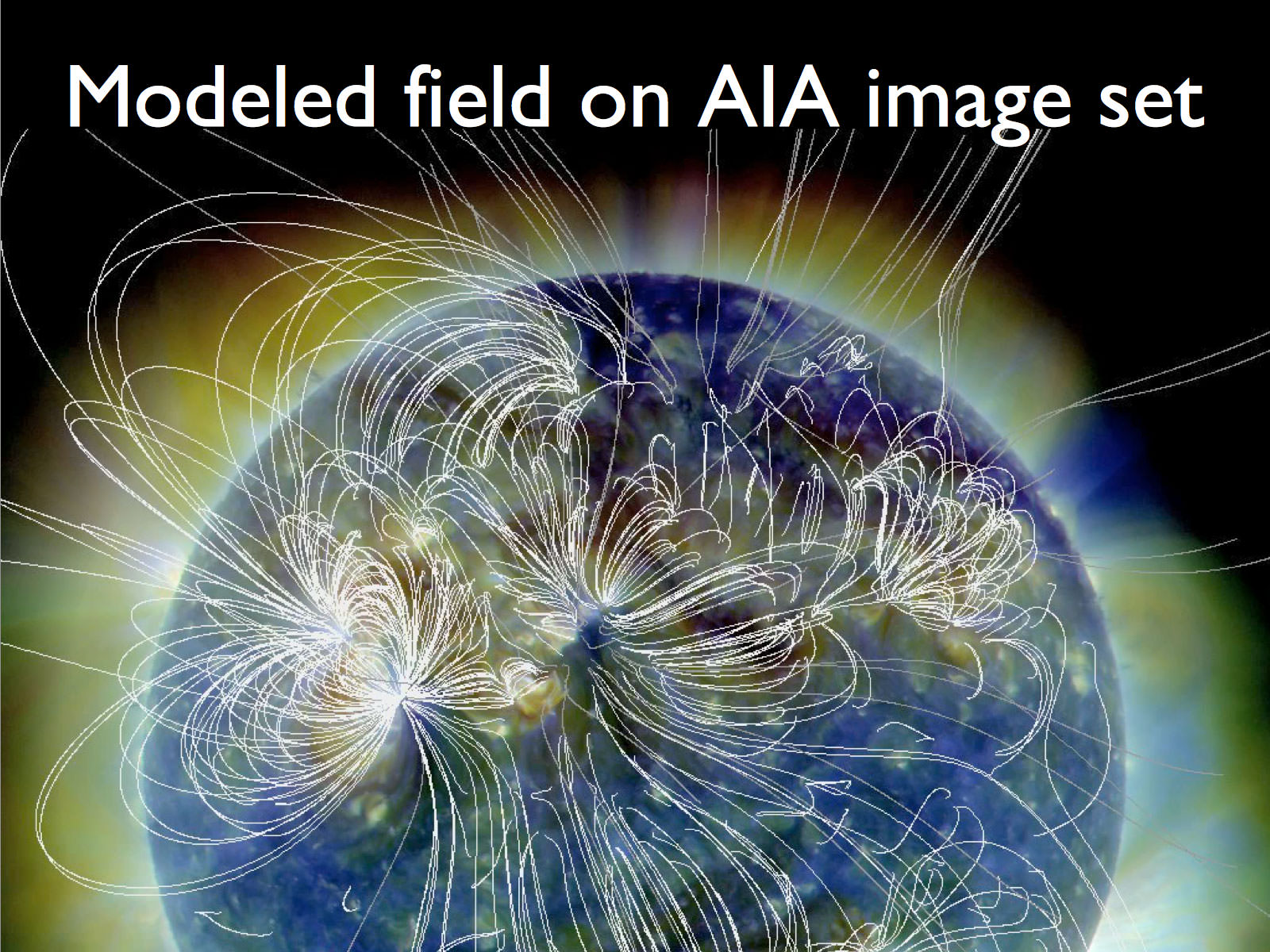For several decades, scientists studying the sun have observed solar flares that appear to occur almost simultaneously but originated in completely different areas on the Sun. Solar physicists called them “sympathetic” flares, but it was thought these near-synchronous explosions in the solar atmosphere were too far apart – sometimes millions of kilometers distant – to be related. But now, with the continuous high-resolution and multi-wavelength observations with the Solar Dynamics Observatory, combined with views from the twin STEREO spacecraft, the scientists are seeing how these sympathetic eruptions — sometimes on opposite sides of the sun — can connect through looping lines of the Sun’s magnetic field.
“The high-quality simultaneous data we received from SDO and the STEREO spacecraft, and our subsequent analysis, enable us to present unambiguous evidence that solar regions up to 160 degrees away are involved in defining the large-scale coronal field topology for flares and CMEs,” said Dr. Carolus Schrijver, who co-presented his team’s findings at the American Geophysical Union meeting in San Francisco.
“From the very first observations with SDO we saw small events seemed to impact large regions of the sun,” said Alan Title of the Solar and Astrophysics Lab at Lockheed Martin, and co-author of the paper, speaking at a press briefing, “but because we are scientists and are sometimes not very clever, we have to sometimes be beaten over the head, and went searching for some kind of causality. It has been in last couple of months where we worked out this picture together.”
The hammer on the head was a series of solar events that took place on August 1, 2010, where nearly the entire Earth-facing side of the Sun erupted in a tumult of activity, with a large solar flare, a solar tsunami, multiple filaments of magnetism lifting off the solar surface, radio bursts, and half a dozen coronal mass ejections (CMEs).
SDO, which launched in February of this year, along with the two Solar Terrestrial Relations
Observatory (STEREO) spacecraft — were ideally positioned to capture both the action on the Earth-facing side of the Sun, and most activity around the backside, leaving a wedge of only 30 degrees of the solar surface unobserved.
SDO’s Atmospheric Imaging Assembly (AIA) continuously observes the full solar corona and can trace perturbations over long distances, even if short-lived. The STEREO spacecraft were able to provide perspectives on activity on most of the “back side” of the Sun, and perhaps most importantly, SDO’s Helioseismic and Magnetic Imager (HMI) provided global magnetic field connections.
[/caption]
As seen in the image above, the looping magnetic field lines connected the various events on August 1. Subsequent observations have revealed similar events.
“The magnetic field lines connect to other flares and other major events, with the eruptions and flares frequently coupled across large distances,” said Schrijver. “Previously, we had been looking for the cause of explosions just in the regions from where the explosions were coming from. That might be a good way to do it, but these observations show another aspect. If we wish to know why the flare goes off, we need to know not just properties of region but also a large fraction of the solar surface, in fact sometimes not even part we can see. So maybe reason we had difficulty figuring this out was that we were not seeing everything. We have to expand our view and look at everything.”
Title compared finally figuring out that these near synchronous events are related to how scientists finally figured out continental drift. “Everyone could see how Africa and South America could have once fit together, but no one could imagine the physical processes that could make that happen,” he said, “but all of a sudden someone measured it and figured out sea floor spreading and it made perfect sense.”
In response to a question of whether the magnetic field on the Sun has areas similar to fault lines on the Earth where magnetic lines emerge repeatedly, Schrijver told Universe Today that the magnetic field lines come from the deep within the solar interior, but why it chooses to emerge in certain areas repeatedly is a mystery. “There are successive nests, where they come up one after another, or preferred regions,” he said, but our details on this are fairly weak. Most of time we don’t know where magnetic field lines will emerge from the sun.”
Title said heliophysics research is still in its infancy, but the new resources SDO provides might bring a new era in this area of study.
“We’ve reached a turning point in our ability to forecast space weather,” said Title. “We now have evidence that multiple events can be triggered by other events that occur in regions that cannot be observed from Earth orbit. This gives us a new appreciation of why solar flare and CME predictions have been less than perfect. As we seek to understand the causes of eruptive and explosive events that will improve our ability to forecast space weather, it is clear that we must be able to analyze most of the evolving global solar field, if not all of it.”

